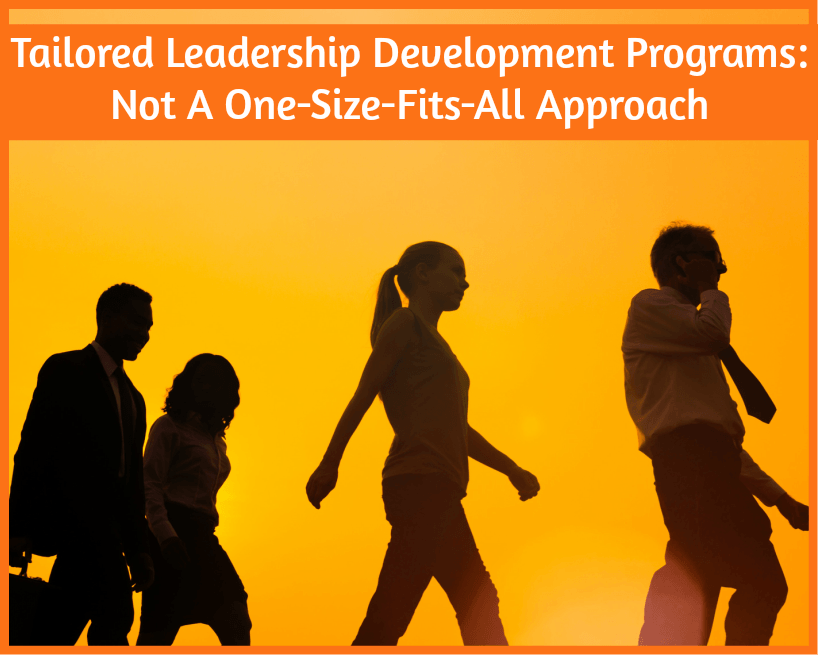
Tailored Leadership Development Programs: Not A One-Size-Fits-All Approach
When it comes to creating and managing leadership development programs, it’s easy to take a one-size-fits-all approach. However, as many People Operations pro’s now point out, this strategy is not nearly as robust as a tailored leadership development program that takes into account the unique aspects of an organization’s human capital.
In today’s digital economy, change happens extremely fast.
And organizations that take too long to react to that change are often left behind. As a result, organizations need to ensure that their most valuable resource – their human capital – is fully prepared for the scope of change in today’s digital economy. And that means creating a tailored program that fully encapsulates the strengths and weaknesses of the workforce.
The first step in the creation of a tailored leadership development program is to take a full inventory of which skills and experiences already exist within an organization.
After all, in order to see where you want to end up, you need to know where you are starting. That means tallying up the relative strengths and weaknesses of a workforce, and then putting this data into a suitable framework where it’s possible to assess how an organization stacks up against the competition.
Once a company knows which skills it has, and which it lacks, it can go about tailoring a leadership development program for specific aspects of the business.
For example, a marketing department may lack the skills to implement new technological approaches to marketing that involve digital innovations such as social networking tools. An operations department may lack a familiarity with data analysis and Big Data, both of which are needed in a global, data-rich economy.
From there, it’s on to the soft skills that are needed by an organization.
What’s needed is an approach that recognizes the need to create links within all branches and tiers of an organization. Using the idea of corporate departments again, someone working in finance needs to know how to interact with marketing and operations, while someone working in operations would need to know how to interact with finance and marketing.
This naturally leads to some obvious differences in how to go about constructing a tailored leadership development program. It also leads to some differences in how that leadership program should evolve over time.
The goal should be a program that produces an employee capable of working across multiple functions and multiple business units within a global context.
Within the corporate world, there are a number of examples of how this might play out in different ways. It usually involves rotational work, the ability to experiment with new roles in a number of different geographic locales, and most importantly, a constant emphasis on developing new skills and talents that can push forward the business goals of the organization.
Ultimately, it makes intuitive sense that a one-size-fits-all approach is not possible.
The diverse sources of talent in today’s global economy, as well as the preponderance of new data about all aspects of an organization’s workforce, means that a tailored approach is not only possible, it is also preferable.
© New To HR


